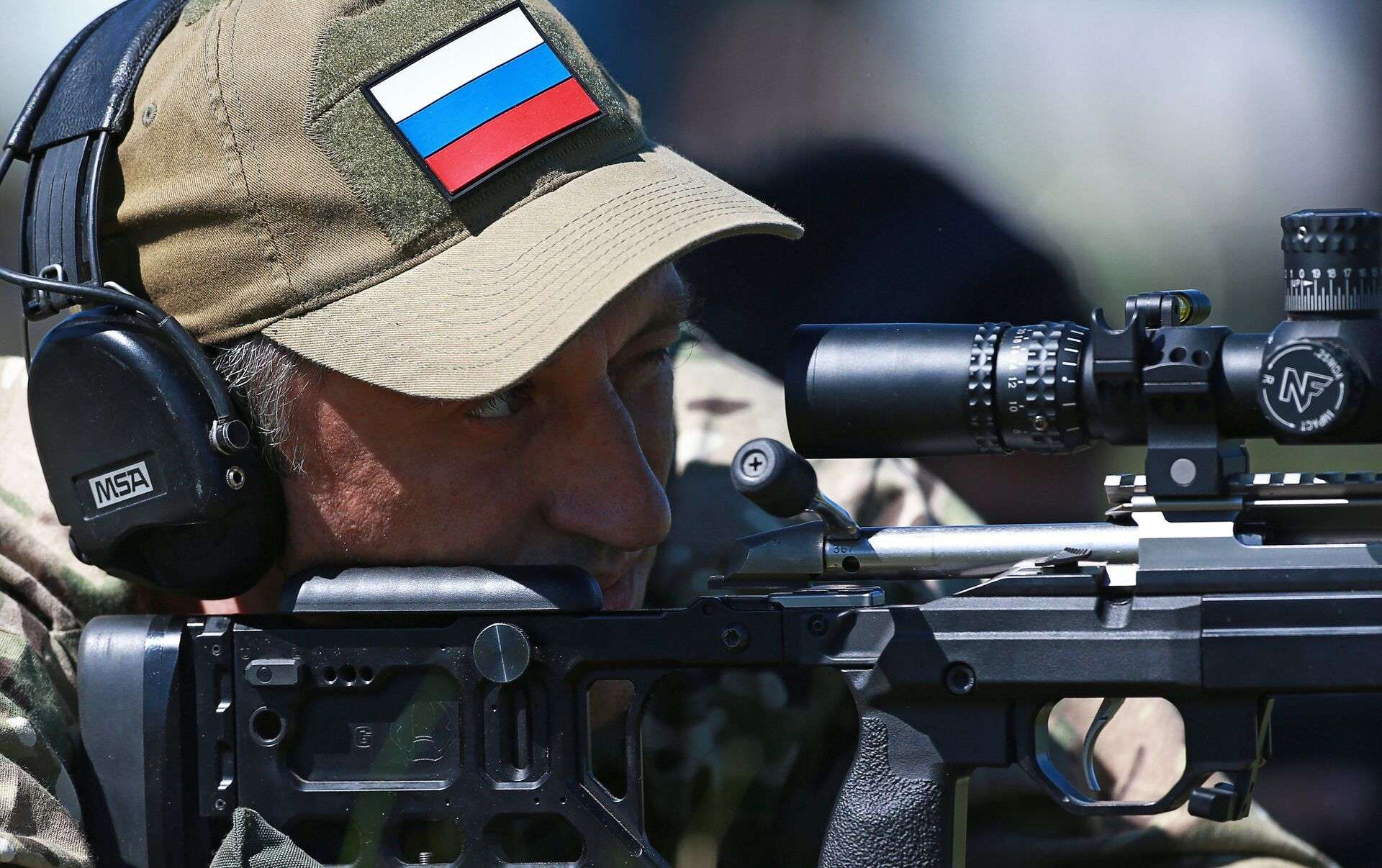Breaking News
Russia starts using airfield staff to form assault units in Ukraine.
On July 29, 2024, the Russian military blogger Fighterbomber reported that Russia has begun recruiting military airfield personnel into ground assault units, forming a motorized rifle regiment within the Aerospace Forces. This development reflects a broader trend of repurposing military personnel due to substantial Russian military personnel losses in Ukraine. The strategy underscores changes in Russia's military tactics and has significant implications for operational effectiveness and personnel management.
Follow Army Recognition on Google News at this link

Russia has formed a motorized rifle regiment within the Aerospace Forces, recruiting military airfield personnel into assault units. (Picture source: Russian MoD)
On July 29, 2024, the Telegram channel Fighterbomber reported that Russia is now recruiting military airfield personnel into assault units. According to the information shared, Russia has formed a motorized rifle regiment within the Aerospace Forces, supported by video evidence showcasing the training of this unit. The regiment includes a diverse group of personnel from airfields, such as engineering and technical staff, flight and lift personnel, and flight crew members. The unit consists of various roles, including gunners, radio operators, mechanics, engine and brake operators, sergeants, warrant officers, and officers, including at least one navigator.
Fighterbomber noted that, despite the unconventional formation, the unit operates effectively and receives adequate provisions, similar to the motorized rifle regiment of the Alexandrov Choir and the DShB CSKA. This recruitment and repurposing strategy indicates a shift in Russia's military approach, integrating airfield personnel into ground assault roles to strengthen their ranks.
On July 30, 2024, WarTranslated reported a reaction to Fighterbomber's post by a mobilized blogger named Vault 8. The blogger highlighted the broader trend of repurposing military personnel, where soldiers are often reassigned to different roles due to the pressures of the ongoing conflict. He criticized the "positional offensive" strategy employed by Russian forces, arguing that it rapidly depletes reserves and relies heavily on poorly trained infantry with insufficient firepower. The blogger provided examples of this repurposing, such as assigning mortar or sniper crews to assault roles following equipment losses.

Various sources, such as the Institute for the Study of War (ISW), indicate that Russian losses in Ukraine are substantial, for both killed and wounded personnel. (Picture source: Twitter/Naalsio)
The blogger's commentary on Fighterbomber's post emphasizes a key point: to avoid a second wave of mobilization, various military units are incorporating contract personnel to replenish or form new detachments. The Navy, for instance, has been transferring contract soldiers to Marine brigades and converting commandant platoons into assault platoons. Similarly, the creation of the motorized rifle regiment from Aerospace Forces personnel exemplifies this trend.
A notable aspect of the Russian military's evolving tactics includes using less valuable units in initial assaults to identify Ukrainian positions before deploying their more elite units. This approach has been observed in the Toretsk sector, where assaults are often carried out by small groups with minimal armored support. Ukrainian forces have documented these tactics, showing that initial waves of less valuable troops help locate Ukrainian defenses, which are then targeted by more capable Russian forces.
For instance, during a three-pronged assault near Novomykhailivka, Russian forces initially used reconnaissance and smaller, less-equipped groups to identify and weaken Ukrainian defenses before launching a more significant assault with better-equipped units, including T-90M and T-80 tanks. This layered approach aims to exert continuous pressure on Ukrainian defenses.

A notable aspect of the Russian military's evolving tactics includes using less valuable units in initial assaults to identify Ukrainian positions before deploying their more elite units. (Picture source: Russian social media)
There are also situational initiatives at the front, such as reassigning "unnecessary" signalmen to assault companies, forming evacuation groups from mortar batteries, and disbanding sniper platoons to bolster assault units. This high turnover, which began around December 2023, results from continuous offensive operations without sufficient operational pauses for replenishment and preparation.
The blogger also highlighted the stringent criteria for demobilization due to injuries, requiring significant trauma, such as losing multiple fingers, to qualify. This has led to many injured soldiers being kept in service and used for reinforcement in assaults. Additionally, the practice of discharging slightly wounded soldiers early is well-documented, further contributing to the strain on personnel.
This strategy of sustained operations without proper pauses has led to mutual attrition. The Ukrainian forces are attempting to improve their personnel exchange rate to at least 1 to 1. This is reflected in their focus on deploying a large number of drones, enhancing the speed of artillery response, and utilizing aircraft like the F-16 as carriers of precision-guided munitions.

There are also situational initiatives at the front, such as reassigning "unnecessary" signalmen to assault companies, forming evacuation groups from mortar batteries, and disbanding sniper platoons to bolster assault units. (Picture source: Russian social media)
Historically, other countries have also repurposed aviation personnel into ground combat roles during times of intense military need. During World War II, Germany repurposed Luftwaffe ground personnel into infantry units as the war situation became dire. Similarly, Japan transformed its aviation and naval personnel into ground combat troops during the final stages of the Pacific War. In the modern context, this strategy reflects an attempt to maintain combat effectiveness by utilizing available human resources more flexibly, albeit with potential impacts on operational efficiency due to the personnel's lack of specific ground combat training.
The formation of the VKS motorized rifle regiment serves as a significant indicator for the Russian mobilized blogger Vault 8, suggesting that without a truce or a second wave of mobilization, the current strategy of relying on inadequately trained infantry may be unsustainable. The need to enhance firepower and operational effectiveness, potentially through increasing the deployment of drones and artillery, seems crucial to avoiding a second wave of mobilization.


























